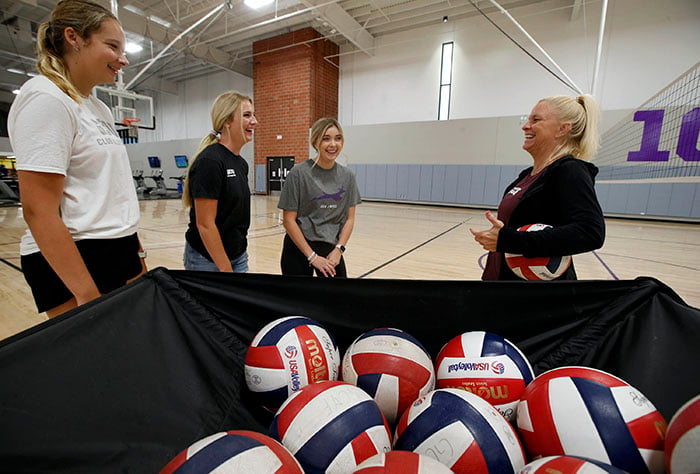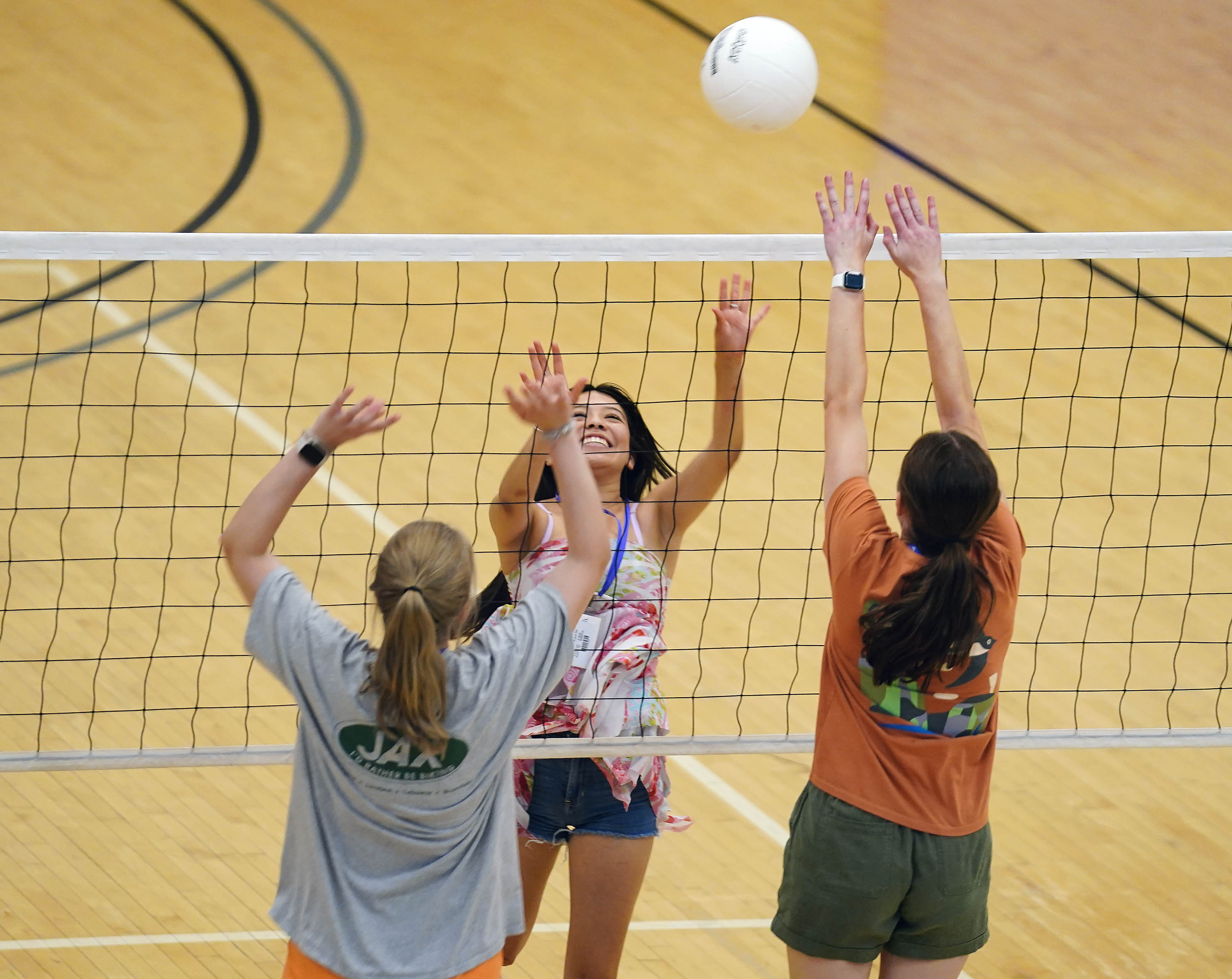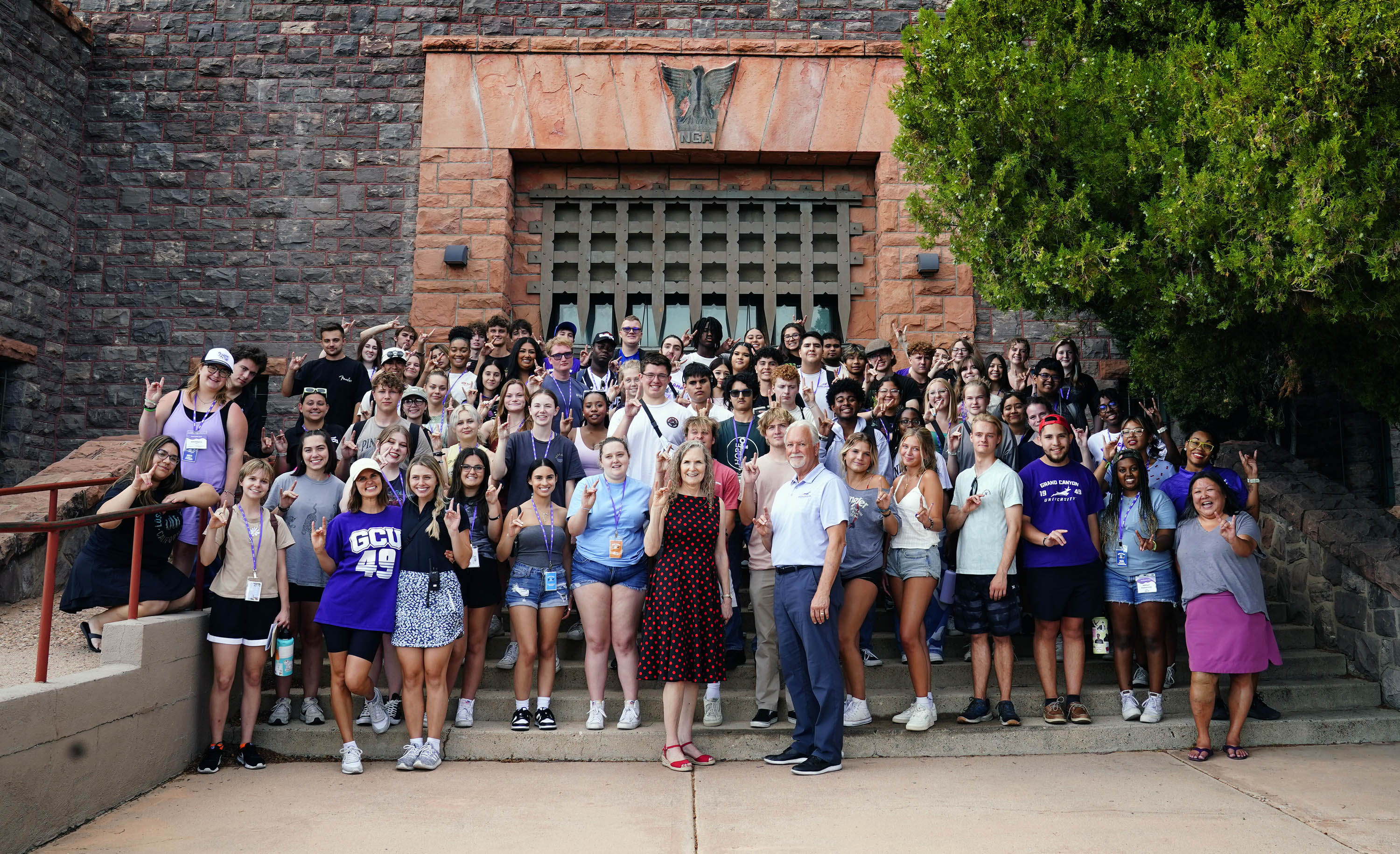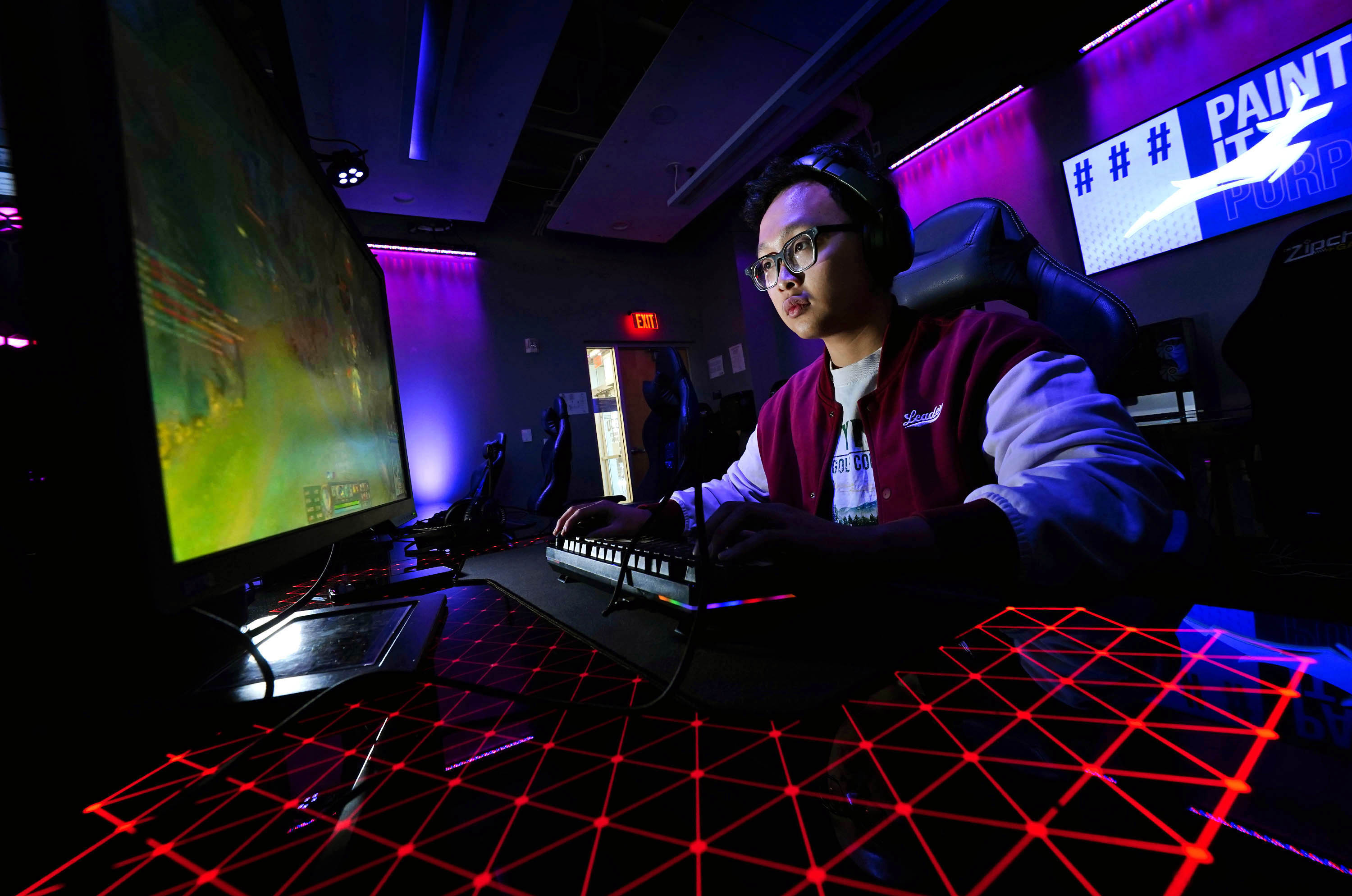
By Lana Sweeten-Shults
GCU News Bureau
Imagine law enforcement one day being able to see, on a computer screen, where a kidnapping hot spot might be developing. Better still, imagine police being able to better predict where a kidnapping could happen.
Within a 10-block radius.
A five-block radius.
A three-block radius …
Connor Segneri more than imagines that day. He’s itching for a chance to make it a reality.
The College of Science, Engineering and Technology computer science major in big data analytics has squeezed and massaged, prodded and pried, then organized data sets from the National Center for Missing and Exploited Children. He has used all those streams of numbers – an endless amount of numbers -- to create an interactive application that police officers could use.
The app was developed for his capstone project – the culminating project of his academic studies at Grand Canyon University, designed to cull all the knowledge he has acquired over his years here and concentrate it into this big academic achievement.
Visitors crowded around him, curious about his project at the Technology Capstone Showcase recently in Building 57, the home for STEM (science, technology, engineering and math). It was where some 40 computer science and computer programming majors, mostly seniors and juniors, showcased their work. One hallway in Building 57 was dappled with everything from a fully functioning website, where users could register, log in and play Minesweeper, to an app that shows the battery level percentages remaining in your Apple devices, to a proposal for a handwriting app that could “read” your handwriting and, perhaps, merge your handwritten notes with your typed computer notes.
Law enforcement asked for help
The capstone process in CSET usually lasts two semesters. The first semester is the design-and-planning phase, and the second semester is dedicated to implementing all those designs.
Segneri’s project came about after he participated in the PayPal Opportunity Hack in October with a team of GCU students. The two-day hackathon – an event in which computer programmers meet up to do some collaborative programming -- connected non-profits with computer engineers to help solve some of their tech problems.
“That’s kind of where this all happened,” Segneri said. “They said, ‘Hey, we have a problem. All of our cops are trying to sort through all these Excel spreadsheets.’ They essentially told us about that, and they requested that we build some sort of app or some sort of map as a way for them to search through all of their data in a faster way. The main point they made is once a child is gone for 24 hours, they’re just gone for good. It’s very rare that they actually get those kids back, so it’s very, very important that we can sort through this stuff as fast as we can.”
Segneri said law enforcement officers were faced with the time-consuming task of scanning through hundreds of thousands of rows of data on Excel spreadsheets. That's not good in dealing with kidnapping cases, where time is of the essence, so he made a map that takes in all of that data.
Law enforcement officers could do a search by plugging in information about a child or about the car used in the kidnapping, for example.
“It’s for them to get what they need as fast as they possibly can,” Segneri said, adding that the possibilities seem to be endless when it comes to this app, which not only shows where kidnappings took place but could be used to warn children about kidnapping methodologies – what tactics kidnappers have used to take children or persuade them to go with the bad guys.
He created the app using a few data sets. If the organization likes what it sees, he’s hoping to be given more data to further develop the app.
Bigger than ever
This is the third year for the Technology Capstone Showcase.
“It is the first time it has been this size,” said Dr. Isac Artzi, CSET’s computer science program lead.
The idea for the showcase, he said, is to connect GCU’s technology students to industry professionals. About 17 employers RSVP’d to the event, where they got to see what the University’s students have accomplished. Students were ready to not only talk about their projects but also to pass out their resumes.

Besides Segneri, one team that seemed like the popular kids on the block was Michael Hesseltine and Tim Lowther, both computer science majors with an emphasis in game design.
They spent two months creating a video game they dubbed "Anachronistic Detective: Quest for the Lost Slushee.”
“The story is that you’re a time cop traveling through different time periods chasing a thief that stole your Slushee. You just want to get it back,” Hesseltine said with a smile.
Each time the game is played, a map is randomly generated so players can get a new experience each time.
“The floor layout is randomly generated, too, and the number of enemies per room,” Lowther said.
The game also touts an old-school, vintage feel.
“There are a lot of game-play elements that are a lot like old-school games like ‘Legend of Zelda,’ where you’re just running around fighting enemies," Lowther said. “Eventually, we plan to implement puzzles and things like that. The (old-school) games were more reliant on your skill, learning how the game works, and how to play the game, just like the old games did.”
At the same time, while Anachronistic Detective feels like those old video games, it still feels new every time you play because of all the randomly generated elements.
Besides getting a chance to create a game for their capstone project, Lowther said he and Hesseltine got to do some “really cool math.”
“There’s a lot of dealing with random numbers … along with just a goofy idea about a time cop chasing a thief for a Slushee,” Lowther said.
It took two months for the students to create their video game.
“It was a lot of late nights,” Hesseltine said. “Our capstone class goes until 7 at night, but we have, in terms of scripting, I think there’s nine scripts (a program or sequence of instructions carried out by another program) that go into this. They all attach to different game objects, so it all functions together. The scripts talk to each other, and it just all comes together. It was a lot of debugging, a lot of hair pulling-out, but I’m proud of what we were able to accomplish in a short amount of time.”
Daniel Briscoe, a computer science major with an emphasis in business entrepreneurship and minor in worship arts, created a Days of Prayer app for his capstone project.

“It’s for people to find out about Days of Prayer, to post events that they’re hosting on Days of Prayer,” said Bricoe, a campus representative for National Day of Prayer Arizona.
He discovered “there’s not a lot of communication” between communities planning Days of Prayer events: “People don’t often have the opportunity to connect to different communities, even though they have very similar goals, so the hope of my app is to make it so people that are interested in one Day of Prayer would start using the app and find out about the different ones.”
App users can add an event and can use the app, too, to find prayer recommendations.
Briscoe’s professor, Shad Sluiter, said of the app, “It’s good. He went far beyond what we did in class. That means he’s spent quite a bit of hours on this.”
Artzi said the Technology Capstone Showcase has grown along with the growth of STEM on campus. CSET is getting ready to graduate its first computer science students in April and will graduate its first engineering students next.
“Next year we’re looking to combine the showcase with the engineering students,” he said.
As for Segneri, he said of his National Center for Missing and Exploited Children app, “I’m very excited about the future and doing more.”
You can reach Grand Canyon University senior writer Lana Sweeten-Shults at lana.sweeten-shults@gcu.edu or at 602-639-7901. Follow her on Twitter @LanaSweetenShul.










